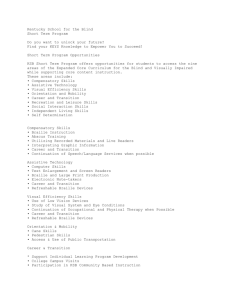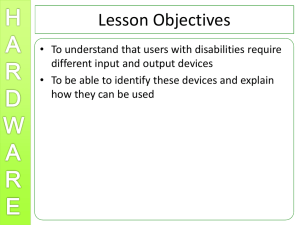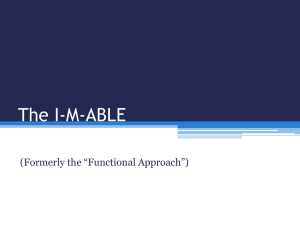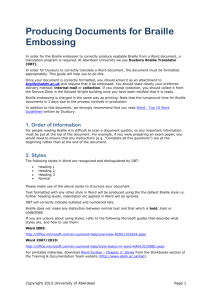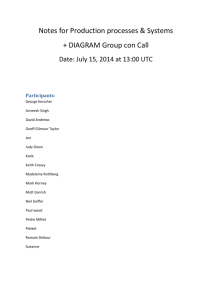3D Tactile Display Technical Presentation
advertisement
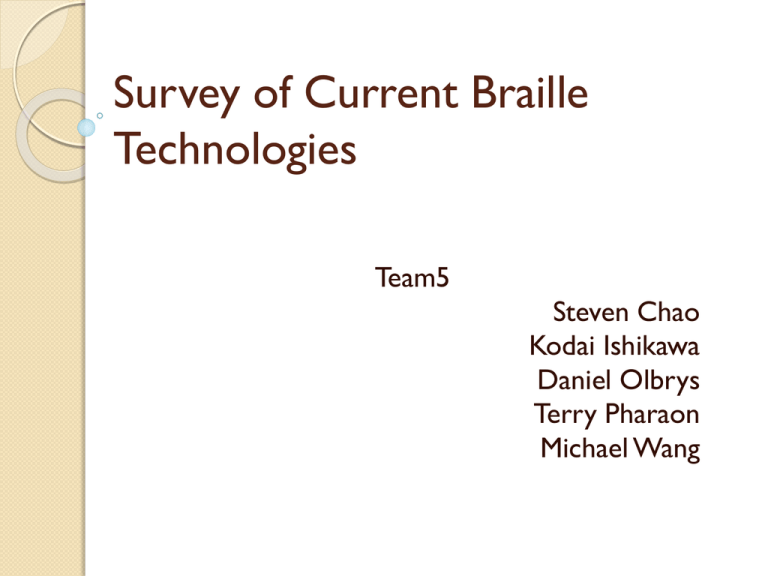
Survey of Current Braille Technologies Team5 Steven Chao Kodai Ishikawa Daniel Olbrys Terry Pharaon Michael Wang Current Braille Display technology Various braille display technologies in the market: Non – Refreshable Printers ◦ Embossed paper braille ◦ 3D printing technology Current Braille Display technology Various braille display technologies in the market: Refreshable Piezo actuators ◦ Electrical energy to linear motion Wheel ◦ Utilizes three electromagnets to adjust dot position Braille Displays • Braille Cells • Cursor Router Keys • Navigation Buttons • Perkins Style Keyboard • Scroll Wheel Braille Displays Features (Standalone) ◦ Word Processor ◦ Book Reader ◦ Web Browser and E-Mail Apex BT 32 - $5495 Perkins Style Keyboard ◦ Dots 1:6 ◦ Enter, Backspace, Spacebar Braille Display Software Braille Displays for iOS ◦ Software Built-in ◦ Bluetooth ◦ VoiceOver JAWS Screen Reading Software ◦ Keyboard Shortcuts ◦ Displays active window/menu Introduction to Piezoelectricity Mechanical Stress generates a voltage Linear relationship Inverse relationship Piezoelectric Applications High voltage and power sources Sensors Motors Actuators Piezo actuators Applying voltage to piezoelectric causes deformation High resolution, µm scale Relatively short distance, not very effective for all uses Refreshable Braille Display A device that displays a line of Braille characters, generally 40-80 cells Each dot is operated by a single piezo-crystal connected to a lever Crystal expansion is small but powerful This allows the display to output text files Analysis of Piezo-Displays High Cost ($1000 - $5000) Individual pin cost is about $4 Virtually instantaneous refresh speed Very high functionality However, the high cost leaves a great deal of room for improvement Rotating-Wheel Based Refreshable Braille Display Developed by National Institute of Standards and Technology (NIST) Inverted method of operation Utilizes three electromagnets to adjust dot position Wheel is spun by small motor (adjustable speed) Still in R&D phase, no commercial products yet (but patents exist) http://academic.uprm.edu/pcaceres/Undergrad/PaperlessBraille/id18.htm Rotating-Wheel Advantages Expected to reduce cost by factor of more than 10x Relatively small footprint (approx. CD player sized) Mechanically very simple (robust) Fast refresh rate (reset after completing one revolution) http://www.google.it/patents/US20020045151 Future Display technology Non-available in the market: Our Design ◦ 3D Refreshable Tactile Display Possible Improvements ◦ Fast, more accurate, more durable and cheap.

